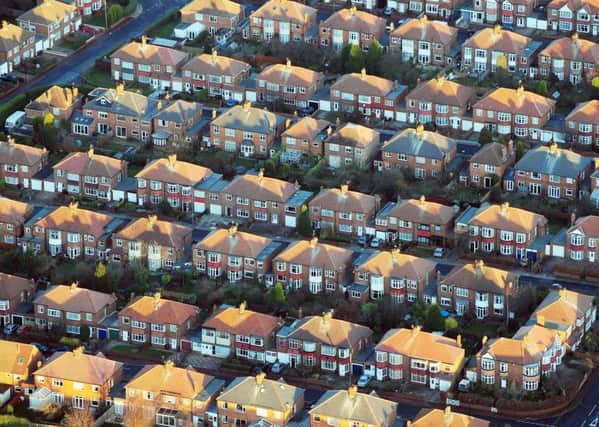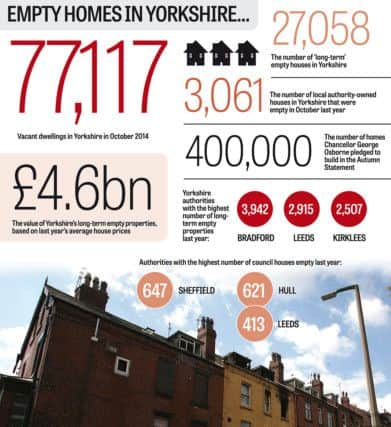77,000 empty homes in ‘Northern powerhouse’


Government figures showed 77,117 houses in the region stood empty last year - with 27,058 deemed as empty ‘long-term’, unoccupied for more than six months.
The staggering figure is revealed just weeks after the Prime Minister unveiled a major expansion of the shared-ownership scheme to boost home ownership in England earlier this month - including easing restrictions on building on the Green Belt, specifically for starter homes; and Chancellor George Osborne revealed plans for 400,000 new homes in the Autumn Statement.
Advertisement
Hide AdAdvertisement
Hide Ad

But campaigners told the Yorkshire Post more must be done to unlock the gold mine that is the region’s unused properties.
The charity Empty Homes, which campaigns to ensure housing assets are not wasted, said councils should work with property owners to bring empty houses back into use, purchase them for social housing or find ways of encouraging people back into neighbourhoods where whole streets have been “abandoned” by transferring ownership to community groups.
Councils have the power to penalise the owners of empty houses by charging up to 150 per cent council tax for over two years, but Empty Homes wants more to be done.
Advertisement
Hide AdAdvertisement
Hide AdIt is also calling on the Government to invest £450m so 20,000 affordable homes can be created from long-term empty houses.
According to figures for the last decade, the number of long-term empty dwellings in Yorkshire peaked in 2008, at the height of the financial crisis, to 43,352; but since David Cameron came to power in 2010 the number has dropped 29 per cent from 38,187 to 27,058 last year.
At last year’s average house price for Yorkshire, £170,926, the long-term empty properties in the region are worth more than £4.6 bn.
The highest number of long-term empty homes were in Bradford, which had 3,942; Leeds, with 2,915; and Kirklees, with 2,507.
Advertisement
Hide AdAdvertisement
Hide AdIn the last year, all three authorities have unveiled plans to accommodate thousands of new homes.
Empty Homes Chief executive Helen Williams said: “The number of empty houses remains persistently high, and the percentage of long-term empty houses in Yorkshire and the Humber is higher than the average for England.
“Now the housing market is more buoyant, you might expect it to be easier to sell properties - but many are still priced out of reach of people on social housing waiting lists.
“We are wasting these homes, and local authorities should have strategies to bring them back into use.
Advertisement
Hide AdAdvertisement
Hide Ad“These figures provide a snap-shot, some may have been brought back into use by now, but a concerted effort is needed to bring more into use.”
Last month the National Housing Federation said a “chronic shortage” of homes in some parts of Yorkshire had seen house prices spiral out of the reach of some families, and that only people earning £38,000 a year can now afford a mortgage in the region.
Roger Harding, director of policy and campaigns at housing charity Shelter said the Government must prioritise investing in building “genuinely affordable” homes.
Mr Harding said: “No-one wants to see homes left empty, but the sad truth is that even if every empty home was put back into use this wouldn’t solve our chronic housing shortage.”
Advertisement
Hide AdAdvertisement
Hide AdA spokesperson for the Department for Communities and Local Government (DCLG) said the number of empty homes is at its lowest since records began, with a 17 per cent decrease in Yorkshire and the Humber since 2010 - down from 92,819 in October 2010.
The Government has introduced a number of measures to encourage the re-use of empty properties, including extending permitted development rights to make it easier to convert property from business to residential use, and giving local authorities financial incentives for bringing empty homes back into use.
A DCLG spokesman said: “Councils should be bringing empty homes back into use, refurbishing them to meet standards, and offering them to households on their waiting lists.
“The Government has given local councils further powers and incentives to do this, with over 100,000 long-term empty properties brought back into use since 2010.”